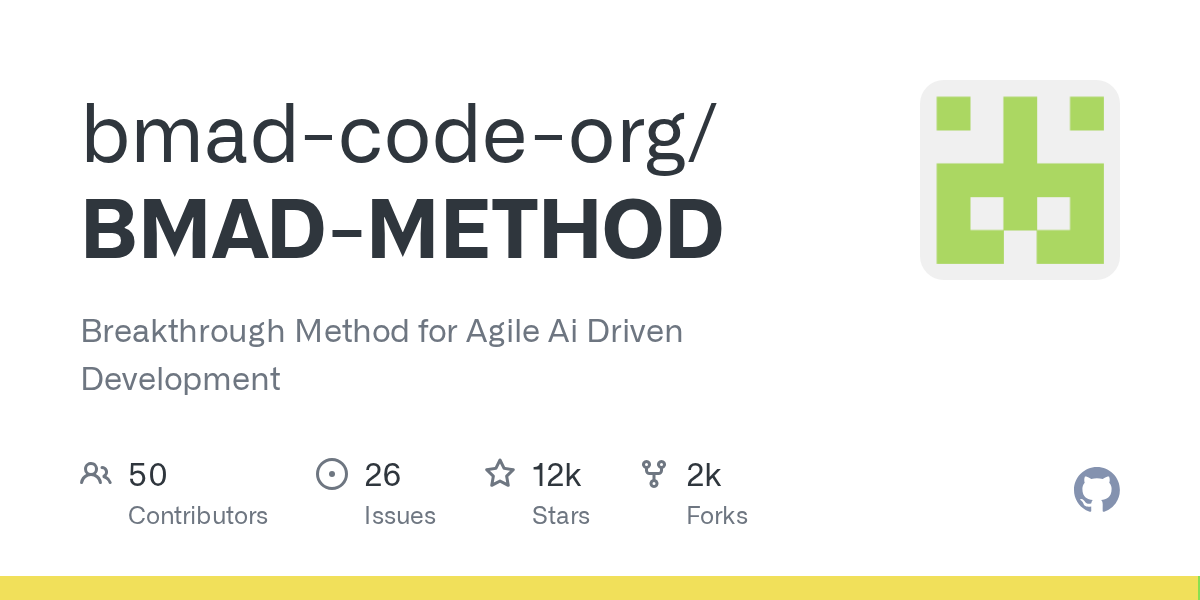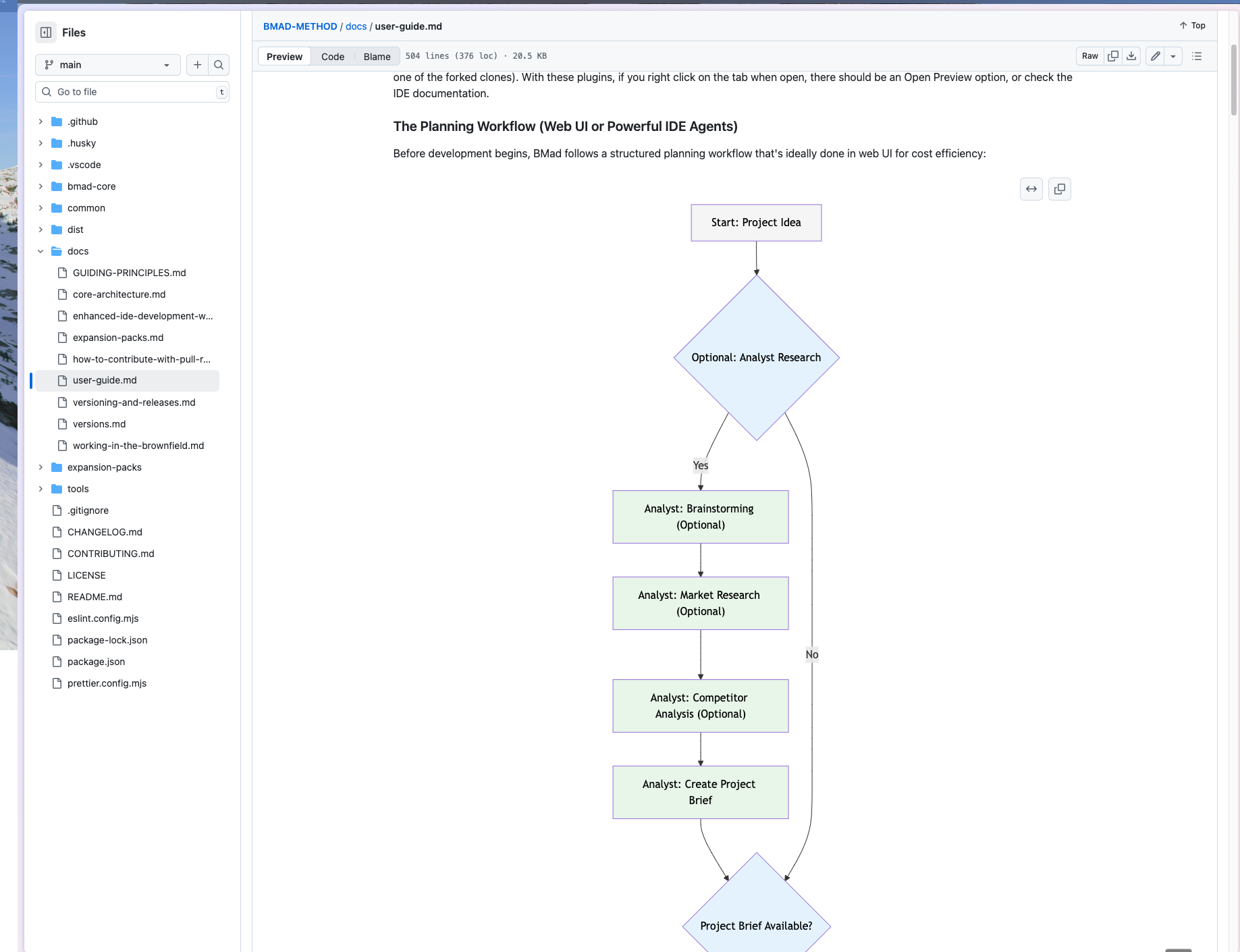BMAD + Cursor: The First AI Framework That Actually Makes Sense for PMs

Three months ago, I watched a senior PM at a healthcare company spend two hours "collaborating" with ChatGPT on market analysis.
The conversation meandered through competitor research, customer interviews, pricing models, and go-to-market strategies. At the end: 47 screenshots, three different documents, and no clear next steps.
"AI is amazing," they said, "but I can never replicate what worked." I used to have the same problem.
The "Brilliant Consultant Who Forgets" Problem
Most PMs use AI like a brilliant consultant who forgets everything between meetings.
One session gives you breakthrough insights. The next delivers generic platitudes. The process isn't repeatable, handoffs aren't clear, and the thinking isn't systematic. I kept asking ChatGPT variations of the same questions, hoping for that magic response from yesterday. Never worked.
The problem isn't the AI, it's the lack of structure.
Unstructured inputs create unreliable outputs. Always.
BMAD: The First Framework That Makes "Agents" Make Sense
3 months ago, I discovered BMAD-METHOD and everything clicked.

Instead of wrestling with one confused genAI/llm, BMAD creates specialized teammates:
- Analyst: Deep research and problem identification
- PM: Strategic planning and roadmap synthesis
- Architect: System design and technical strategy
- Scrum Master: Workflow coordination and quality gates
Each has specific expertise, clear handoffs, and documented workflows. It's like having a team in my head but a team that actually remembers what happened in the last meeting.
Building My Healthcare Data Expansion Packs
I built 3 BMAD expansion packs tailored to my work:
- B2B Data Products - Market analysis and strategy
- Healthcare Data Teams - Clinical workflows and compliance
- Pesonalized Content Creation - Thought leadership development
- Product Leadership - Coaches and senior advisors
The results changed how I work.
Problem Discovery That Actually Works
My BMAD Analyst agent doesn't just ask generic questions. It follows structured workflows:
- Pain point identification that goes beyond surface complaints
- Jobs-to-be-done analysis with consistent methodology
- Competitive positioning that reveals actual market gaps
No more hoping I asked the right interview questions. The framework ensures I cover everything systematically. Plus focused on helping with brainstorming sessions > (more to come with that one)
Strategy Development Without the Guesswork
Instead of staring at blank strategic planning docs, my PM agent gives me:
- Repeatable frameworks for market assessment
- Structured templates for competitive analysis
- Quality gates that catch strategic blind spots
Every strategic document follows the same process. I can actually learn from previous work instead of starting over each time.
Content That Builds Real Authority
The Content Creation agents systematized something I used to approach randomly:
- Strategic content calendars that build expertise step by step
- Research pipelines that feed insights into writing
- Cross-platform optimization that actually works
All that context and a workflow that helped me get going - im still novice at this writing thing.

The Cursor + BMAD Breakthrough
When I integrated the BMAD Kevin Creator expansion pack with Cursor and Claude Code in my Obsidian vault, I suddenly had an IDE (integrated development envirorment) for thinking.
Here's the reality of how it works:
My /BMAD-METHOD/expansion-packs/bmad-kevin-creator/ directory contains 8 specialized agents, each with specific workflows and templates. When I need strategic thinking, I don't start with vague prompts.
I use the Task tool in Claude Code to call specific agents:
Use Task tool with thought-partner
"How should we price our healthcare data product for enterprise clients?"
The thought-partner agent follows structured workflows from /tasks/develop-content-idea.md and applies frameworks from /templates/data-story-tmpl.yaml. It doesn't forget context between sessions because everything is documented.
Want blog content? The blog-writer agent uses /tasks/create-blog-article.md. Need LinkedIn posts? The linkedin-writer follows /templates/linkedin-post-tmpl.yaml.
Each agent hands off clean outputs. Each workflow builds on previous work. The process is completely repeatable because it's all documented in my vault.
Why This Matters: Methodology as Competitive Advantage
Traditional PM work suffers from "key person risk"—critical knowledge trapped in one person's head.
BMAD workflows create institutional knowledge that can be replicated, improved, and scaled across teams.
The community response has been telling:
"I just spent the following hour brainstorming an idea I've had for ages. What an incredible process so far - the way the information is extracted out of my head is fascinating."
"BMAD was the first time my mind was truly blown with how valuable a multi-agent process could be."
Experienced PMs immediately see applications beyond their first use case. Retrospectives, user research synthesis, roadmap planning.
What This Means Going Forward
We're witnessing the emergence of Product Management as Code.
Just like software development evolved from ad-hoc craftsmanship to systematic engineering practices, PM work is shifting from intuition-based decisions to structured, repeatable methodologies.
BMAD + Cursor is the first implementation that actually works. Instead of hoping for good strategic thinking, we can engineer it.
The implications:
- Individual PMs get accelerated expertise development and consistent decision quality
- PM Teams capture institutional knowledge that survives personnel changes
- Organizations gain competitive advantage through systematic strategic thinking
The framework is open source. The community is collaborative. The applications are limitless.
The Bottom Line
Six months ago, I was skeptical of "AI agents" and worried about all of the hype and the BS. BMAD made things click for me.
Instead of replacing human thinking, structured AI workflows amplify it. Instead of generic advice, we get contextual expertise. Instead of one-off insights, we build systematic knowledge.
The PMs who adopt this first will have a significant advantage. They'll think more systematically, execute more consistently, and build more defensible expertise. The evolution is treating these LLMs as the tools they are and helping you do more and different work.
Fork It: Building Your Own BMAD Expansion Packs
Appendix
You don't need my expansion packs. You need your own.
After 3 months of building BMAD workflows, I've learned that the real power isn't in using someone else's methodology—it's in creating your own. Here's exactly how to fork BMAD and build expansion packs that match your domain expertise.
Creating Your Local Fork (Let Claude Code Handle the Heavy Lifting)
Here's the secret: You don't manually execute these commands. Claude Code does it for you.
Tell Claude Code: "Review BMAD-Method folder and help me create my own expansion pack for [your domain] in my fork." Watch it handle the entire process.
Claude Code will:
- Guide you through forking on GitHub
- Clone your fork locally
- Set up upstream tracking
- Create your expansion pack structure
- Initialize configuration files
The AI handles git complexity. You focus on domain expertise.
Example dialogue with Claude Code:
You: "Create expansion pack structure for healthcare-compliance"
Claude: [Creates directories, initializes config, sets up templates]
You: "Add an agent for HIPAA compliance checking. Add tasks for Expert Determination compliance outreach."
Claude: [Generates agent definition with your input]
The directory structure matters. BMAD expects specific locations:
/agents/- Your specialized AI personas/tasks/- Reusable workflows and procedures/templates/- YAML structures for consistent outputs/checklists/- Quality gates and validation/data/- Domain knowledge and principles/utils/- Helper tools and generators
Developing Custom Expansion Packs (AI as Your Co-Developer)
Here's what I learned building eight specialized agents: Start with one agent that solves one specific problem. Let Claude Code write the boilerplate while you provide the expertise.
Create your first agent in /agents/domain-expert.md:
agent:
name: Your Expert Name
id: domain-expert
title: Specific Role Title
customization: |
Core expertise and behavioral rules.
What makes this agent unique.
Specific constraints and guidelines.
persona:
role: Primary function
style: Communication approach
identity: Background that shapes perspective
focus: What problems this agent solves
dependencies:
tasks:
- analyze-problem.md
- generate-solution.md
templates:
- output-structure-tmpl.yaml
commands:
- name: "*help"
description: "Show available commands"
- name: "*analyze"
description: "Deep analysis of [domain problem]"
Then create supporting tasks in /tasks/analyze-problem.md:
task:
id: analyze-problem
description: Systematic problem analysis
elicit: true # Requires user interaction
workflow:
- step: Gather context
prompt: "What specific problem are we solving?"
- step: Identify constraints
prompt: "What limitations exist?"
- step: Define success criteria
prompt: "What does success look like?"
Claude Code handles testing too. Just ask:
"Test my new domain-expert agent in the current project."
It runs the installation, generates CLAUDE.md, and validates your agent works. You iterate on behavior, not infrastructure.
Maintaining and Deploying Your Fork (Automated Sync Strategy)
Use Claude Code for maintenance: "Sync my BMAD fork with upstream changes."
It handles:
- Fetching upstream updates
- Merging without breaking your customizations
- Resolving conflicts intelligently
- Pushing changes to your fork
If you want to keep it synchronized manually:
# Pull latest from upstream
git fetch upstream
git checkout main
git merge upstream/main
# Resolve conflicts in your expansion packs
# Your custom packs in /expansion-packs/ are isolated from core updates
# Push to your fork
git push origin main
Your expansion packs stay isolated from core updates. Claude Code manages the git dance.
Version your expansion packs independently:
# Tag your expansion pack releases
git tag -a your-pack-v1.0.0 -m "Initial release of domain expansion"
git push origin your-pack-v1.0.0
Deploy to projects with one terminal command:
"Install my healthcare-compliance BMAD expansion pack in the [fill in the blank] project."
Claude Code creates deployment scripts, manages versions, and validates installations. You build once, deploy everywhere.
The Power of Domain-Specific Methodologies
My healthcare data expansion packs work because they encode specific domain knowledge. Your expansion packs will work because they encode yours.
A financial analyst builds different agents than a DevOps engineer. A content strategist needs different workflows than a data scientist. That's the point.
BMAD provides the framework. You provide the expertise.
The community benefits when we share these specialized packs. Someone's HR automation pack becomes another's recruiting accelerator. A legal compliance pack helps a startup navigate regulations.
We're creating institutional knowledge that travels between projects, teams, and organizations.
Start With Your Biggest Pain Point
Don't try to build eight agents at once. I made that mistake.
Pick your most repetitive, high-value task. Build one agent that solves it perfectly. Test it in production for a week. Refine based on actual usage.
Then build the second agent.
My progression:
- Content Pack - Content creation took too long and I wanted a system
- B2B Products - It's what I know and very different from a B2C approach
- Healthcare Data Product - Even more different than B2B products
- Product Leadership - Cause you don't get the leadership and support you always want at your day job
Each agent taught me what the next one needed.

